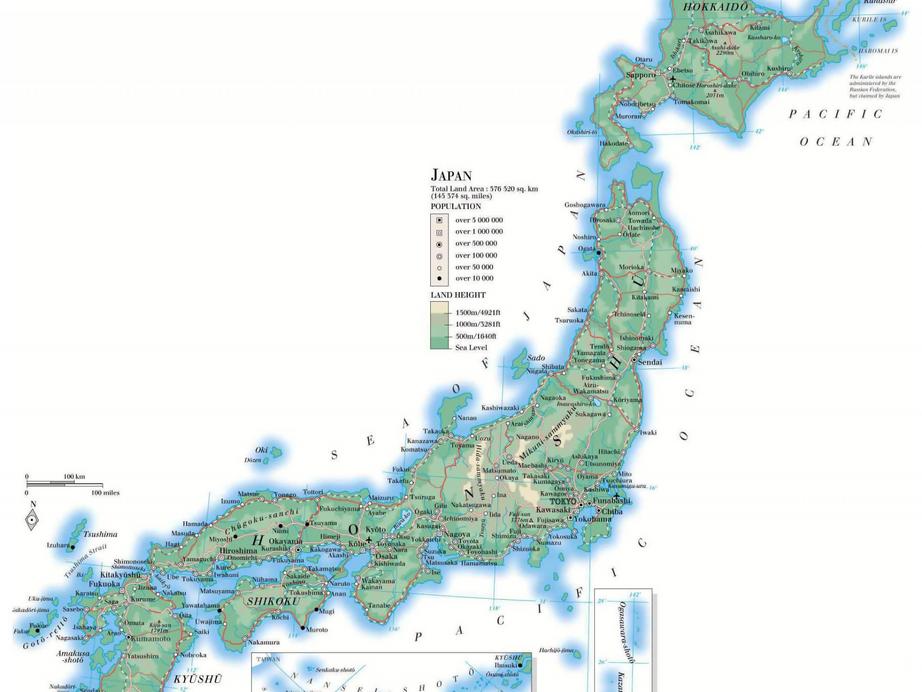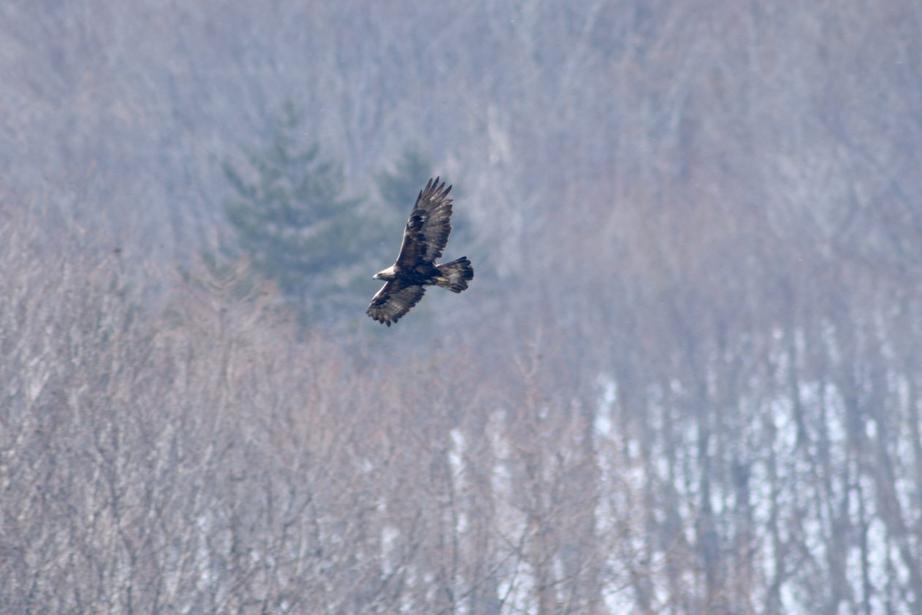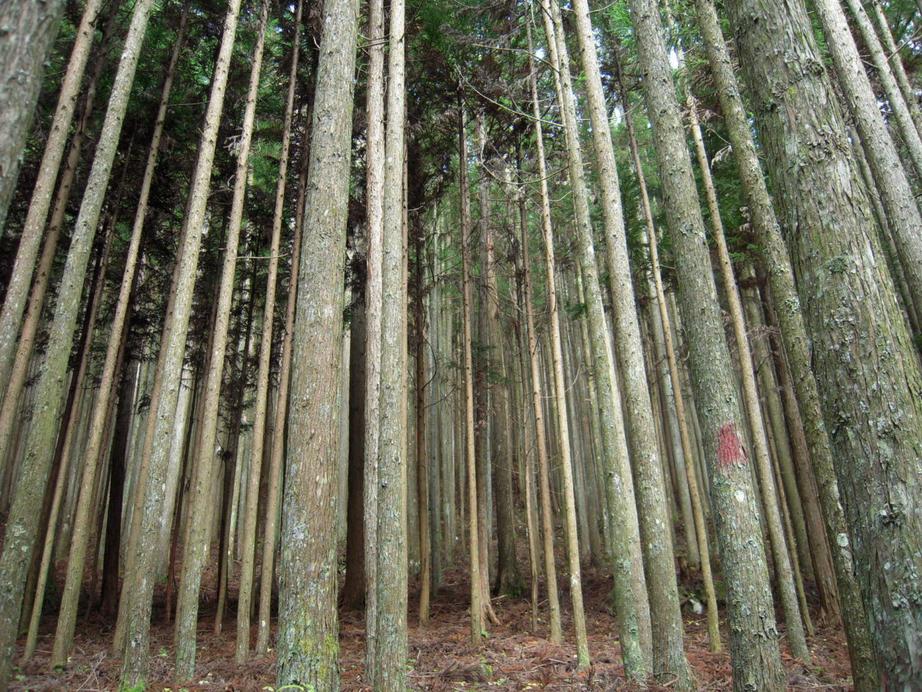Hope for Japan’s eagles
Although Japan is heavily wooded, many forests are monoculture tree plantations that harbor scant biodiversity. Now, efforts are underway to return these woodlands to a more natural state in hopes of bringing back golden eagles and other wildlife.

About a mile up a logging road in Akaya Forest, a 25,000-acre preserve in the mountains of Japan’s Gunma prefecture, Seiichi Dejima stops short. The gravel road is scattered with what look, at first, like overgrown dandelion seed tufts. Dejima, who works for the Nature Conservation Society of Japan, crouches to poke a large clump with a rock. Coarse, cream-colored fur covers a raw flap of skin: the remains, he says, of a freshly killed serow, an antelope-like forest dweller.

Scrambling up the slope above the road, Dejima scans the carpet of needles beneath the Japanese cedars for more signs of the serow. A minute of searching turns up a black-hooved leg; a minute more, a grinning skull, picked clean except for a tuft of hair between its short, pointy horns. Judging by the size, the animal was no more than a year or two old. Its torso is nowhere to be found.
“There’s a high possibility this serow was killed by a golden eagle,” says Dejima, who manages the state-owned forest — located 80 miles northwest of Tokyo — in collaboration with Forestry Agency staff and local citizens. His voice is tight with excitement. “It may have carried the torso to its nest.”

A golden eagle, one of few remaining in Japan. NACS-J
Golden eagles are nearly extinct in Japan, largely because they cannot catch enough prey to feed their young in the timber plantations that cover much of their range. In Akaya Forest, Dejima and his colleagues are trying to help them by converting some of these plantations to natural meadows and, eventually, forests that harbor more of the golden eagle’s prey, such as hare. The project is meant to be a model for forests nationwide, and his find is a sign that it may be working. It is also a sign that 75 years of disastrous forestry policy in Japan may, very slowly, be starting to change in ways that benefit not only eagles, but also bears, rabbits, and other wildlife.
 pixabay.com
pixabay.com
Those species currently face a peculiar paradox: Although the mountainous “green archipelago” of Japan has more forest cover than almost any other developed country, little of it can support the abundance of plants and animals that once thrived there. A big reason, scientists say, is that too many natural forests in Japan have been converted to poorly managed, single-species conifer plantations, even deep in the mountains. These plantations make up 41 percent of Japan’s forests (within Akaya Forest, the figure is about 30 percent). The remainder is mostly secondary growth and alpine scrub. “There is very little forest left that can support large raptors like golden eagles,” says Ryuichi Yokoyama, associate director of the Nature Conservation Society of Japan.
Now, the Forestry Agency is calling for some plantations to be converted back into more diverse mixed forests. The motivation is partly environmental — to preserve biodiversity, protect water resources, and provide recreation — and partly practical.
“In remote areas it takes a lot of labor to harvest timber, and it’s hard to make a profit,” says Toshio Uno, a principal planning officer in the Forestry Agency’s private forest department. “Our general policy is to restore those areas to natural forest.”
Japan’s history of troubled forest management dates at least to the 6th century.
While this concept has been gaining momentum within the government for nearly two decades, it has only recently begun to play out on the ground. In 2006, the agency set a goal of converting about a third of what it dubs “single-story forests” into “multi-storied forests.” Essentially, Uno says, that means introducing a mixture of broadleaf trees into both publicly and privately held monoculture timber plantations, and eventually restoring them to a more diverse, mixed forest. (The agency directly manages a third of Japan’s forests and influences management of the remainder through subsidies.)
The agency was deep in debt, however, so even after the goal was set, most funds went to the more immediately profitable project of thinning and harvesting accessible timber stands, not rehabilitating remote ones. A fiscal reorganization in 2013 took off some of the pressure to generate quick profits, and recently the agency has been participating in several experimental restoration projects like the one in Akaya Forest, which got underway in 2015.
But Tatsuhiro Ohkubo, a forest ecology and silviculture professor at Utsunomiya University, is skeptical about the government’s commitment. He points out that the Forestry Agency devotes little staff and scant funds to “rewilding” or wildlife conservation — a sign that these are not core priorities.
“Projects like the one in Akaya Forest are great, but biodiversity-oriented management has not been mainstreamed into the Forestry Agency’s work nationwide,” says Ohkubo, who is involved in several restoration projects north of Tokyo. He says little has changed on the ground in his region, despite directives from the central government to begin transitioning to mixed forests.
Japan’s history of troubled forest management dates at least to the 6th century, when the construction of massive wooden monasteries and palaces led to deforestation in the mountains surrounding the ancient capitals of Nara and Kyoto. Waves of exploitation and restoration followed. By the early 1900s, Japan’s green mantle had largely recovered thanks to regulation and the advent of plantation forestry, but virtually no virgin forest remained outside the northern island of Hokkaido.

A planted forest in Nara Prefecture, Japan. TAMAGO MOFFLE/FLICKR
During World War II, many mountains were clear-cut for timber for military uses like shipbuilding, and afterward more trees were cut to rebuild bombed-out cities. In the 1950s, the government paid to replant these mountains with a handful of conifer species. But the publically funded forestation project did not stop there: During the 1960s, more than 850,000 acres of deciduous forest were converted to plantations every year, and the project continued, at a reduced scale, into the 2000s.
Yoichi Okada, an innkeeper who lives near Akaya Forest, remembers crying as trucks loaded with massive old beech and oak trees rolled past his home in the 1950s. Villagers later planted the cleared areas with Japanese cedar, cypress, and larch.
“The government paid per tree so everyone planted right up to the top of the mountains to make money,” says Okada, who later became involved in efforts to protect the forest from a golf course and dam. “Then the young people went away to Tokyo, and no one was left to care for the forests.”
Trade liberalization worsened the problem, as cheap foreign timber flooded the market and landowners lost their motivation to thin the young trees. The abandoned plantations grew dark and dense, especially in remote areas. Meanwhile, closer to villages, people stopped caring for grasslands and coppiced woodlands as industrial products replaced traditional ones like charcoal and roof thatch. Those woodlands, too, grew over with scrub and then dense secondary forest.
These trends have devastated golden eagle populations, Dejima says. The powerful hunters have a wingspan up to 6 ½ feet, so they cannot dip and dive through dense plantations — and even if they could, they would find few hares, pheasants, or other prey in the nearly bare understory. A number of studies suggest this has impacted their ability to feed their young. The proportion of adult birds that fledged a chick in a given year has fallen by more than half since the early 1980s, and today only about 200 breeding pairs remain in Japan. (By contrast, golden eagle populations are largely stable across much of the Northern Hemisphere, where they typically inhabit grasslands — a landscape that is rare in Japan.)
One option is to develop a brand of “eagle-friendly” timber that can pay for its own extraction.
Very little data exists on how Japan’s forest policy has impacted other species. Systematic wildlife censuses weren’t carried out before the war, and a range of postwar factors — including a decline in the number of hunters and the emergence of new habitat around depopulated villages — complicate attempts to understand how the loss of natural forest in remote areas has impacted wildlife, according to Katsuhiro Osumi, a professor of silviculture at Tottori University. Deer populations, for instance, have skyrocketed in recent years for a number of reasons: a decline in hunters, warming winters, and the fact that young timber plantations provide a rich (but temporary) food source.
Still, many ecologists say the overall ecological impact of Japan’s monoculture forests has been significant.
“The loss of deciduous forest has affected bears and many other mammals,” says Mitsuhiro Hayashida, a professor of forest biodiversity conservation and wildlife management at Yamagata University, in northern Honshu. In one recent study, he placed motion sensor cameras in adjacent natural and plantation forests to compare how wildlife use them; more than 70 percent of the animals captured on camera were in the natural forest, and for hares, a favorite food of golden eagles, the figure was nearly 90 percent.
That data comes from an experiment in eagle-friendly forest management that Hayashida is currently conducting in the foothills of Yamagata Prefecture’s Mount Chokai, where two breeding pairs live. He is monitoring the impacts of thinning about a third of the smaller trees in a timber plantation there and widening the strips of grass along logging roads in order to encourage the sun-loving grasses and herbs that hares prefer. That will theoretically provide more prey for eagles while also improving the quality of the remaining timber — an approach Hayashida views as financially realistic, if not adequate to save golden eagles on its own.
By contrast, the experiment in Akaya Forest entails clearing small patches of plantation in order to increase the number of hares (who feed on plants that sprout in the clear-cuts) and make them more visible to the eagles. As the cleared land grows over with deciduous trees, new patches of plantation will be cut; in about a century, the whole project area should transition to the type of mature natural forest that eagles prefer, with an open canopy and grassy gaps from fallen trees.
The first five acres were cleared in 2015. That winter, the pair of eagles that lives in the forest was observed searching for prey over the clear-cut, and the following spring, they successfully raised a chick for the first time in seven years — although it’s not clear if their new habitat played a role. Some stands of plantation have been thinned as well. (This was where Dejima found the serow remains.)
Still, Dejima worries about funding future stages of the project, let alone expanding it nationwide. “There was huge public support for the afforestation project [of the 1960s and 70s],” he says. “But who will rejoice if taxpayer dollars are used to turn plantations back into natural forest? Not many people are pushing for this.”
Ultimately, he believes, the work must fund itself. One option is to develop a brand of “eagle-friendly” timber that can pay for its own extraction; another is to expand corporate sponsorship. (Both his project and Hayashida’s are partly funded by Rakuten, the technology company that owns the Tohoku Rakuten Golden Eagles baseball team). Whether those ideas gain momentum quickly enough to save Japan’s golden eagles remains to be seen.
For the rest of this article please go to source link below.

